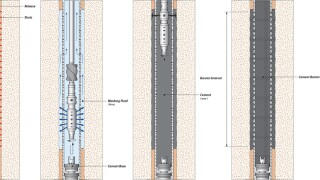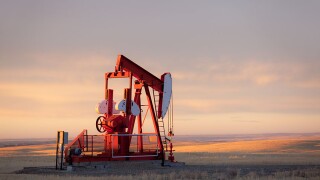Drilling
Oil and gas companies drilled 75 “high-impact” wells in 2024, representing 5.2 billion BOE.
This paper presents a comprehensive literature review of perforate, wash, and cement techniques that compares new methods with traditional ones and uses field cases and computational fluid dynamics to find the most cost- and time-effective practices without sacrificing safety.
The authors of this paper describe a method of stimulating a multizone hydrocarbon-producing well wherein a tool is deployed downhole by wireline to generate acid vapor at a target depth, allowing each interval to be treated uniquely.
-
The Pluma-1 discovery could turn the southeast portion of Stabroek Block off Guyana "into a major new development area," the company says.
-
Operators face a dilemma in balancing the need for mud weight (MW) to remain below the fracture gradient to avoid losses, while also providing sufficient density to block influxes into the well.
-
Recent research shows that, in addition to hardness, other rock properties, such as lithology types, heterogeneity, and abrasiveness, have equal importance in bit evaluations. Consequently, the discussion must move from rock-strength analysis to rock-drillability analysis.
-
Using log data from offset wells, a bit-selection software based on unconfined compressive strength (UCMPS) calculations has been used to optimize the bit selection for Well X.
-
This paper will show how stick/slip vibration distributions can be used to guide drillstring and parameter redesign to mitigate stick/slip in the next well.
-
Severe bit damage is an issue in West Texas land drilling because of abrasive sand formation and interbedded hard stringers.
-
Helmerich & Payne’s first 100 years have required constant reinvention. Now the company hopes its new drilling software platform built on the acquisitions of two startups will propel it through the next century.
-
Visuray is using its unique X-ray technology to improve downhole imaging.
-
This paper demonstrates a work flow to determine optimal lateral lengths and trajectories in the Midland Basin by studying the effect of the lateral length and trajectory on well production.
-
This paper presents an approach to modeling the cuttings-lag-depth distribution caused by the dispersion of cuttings-transport velocity in directional drilling.













